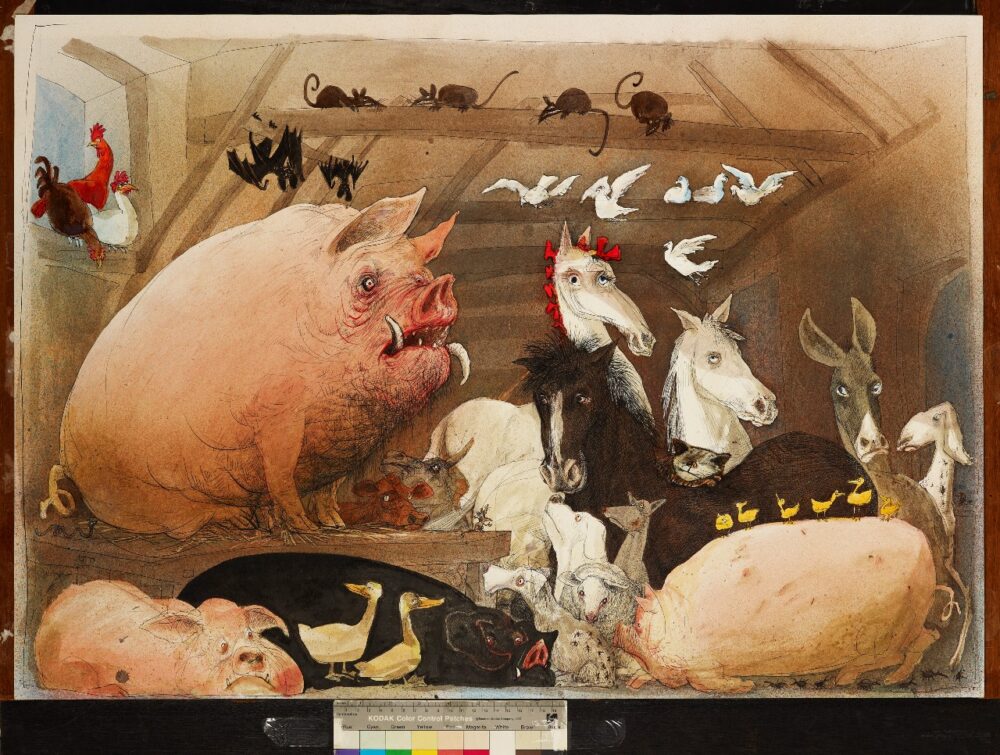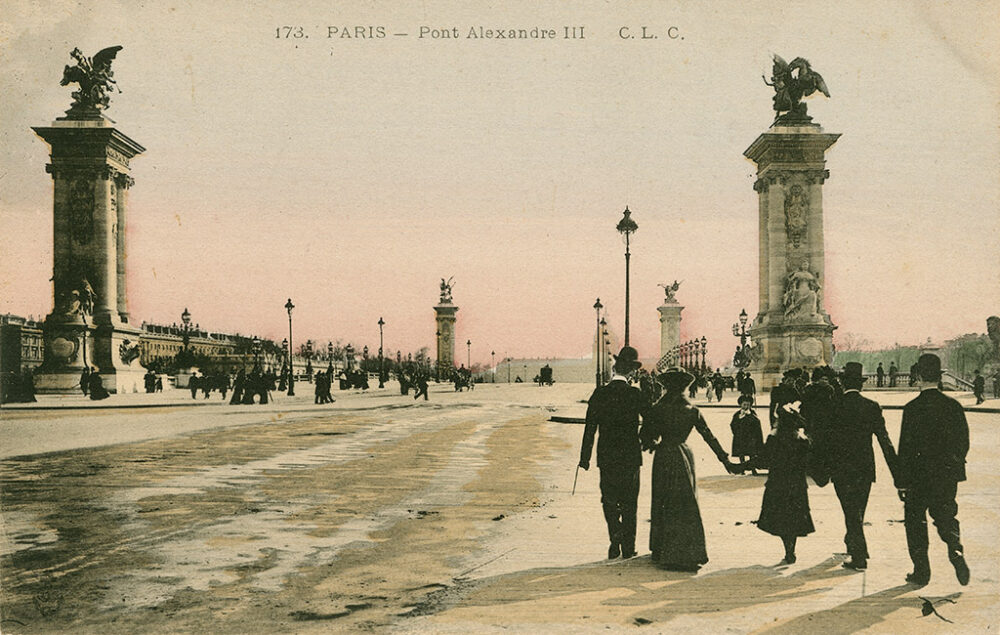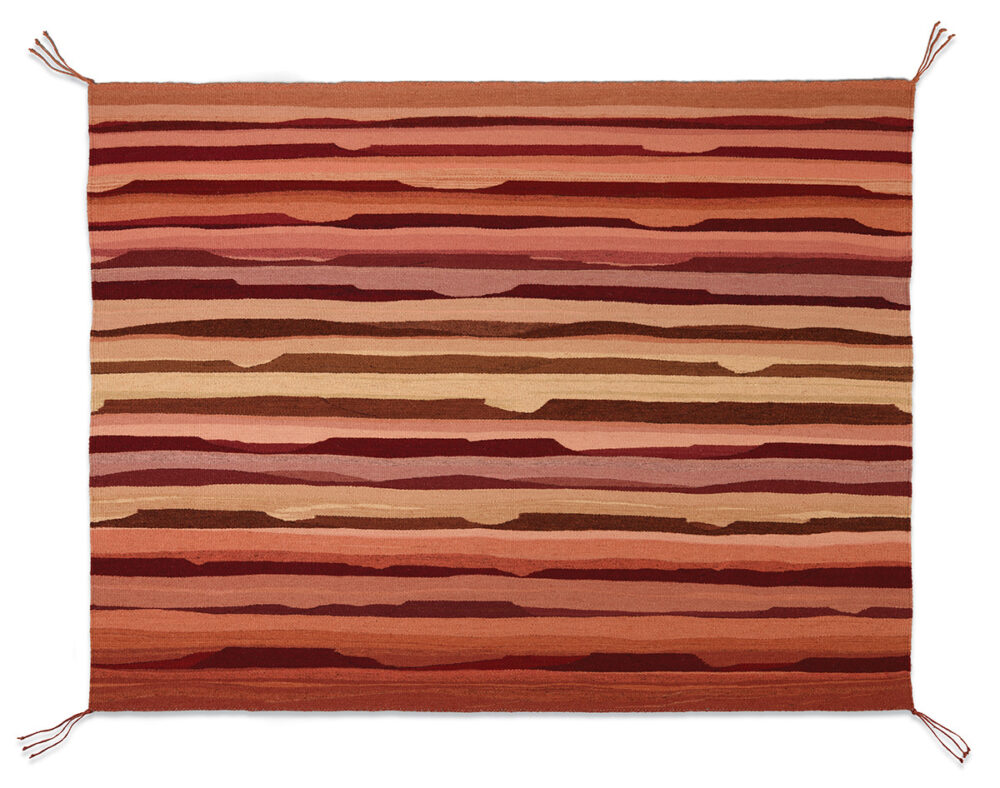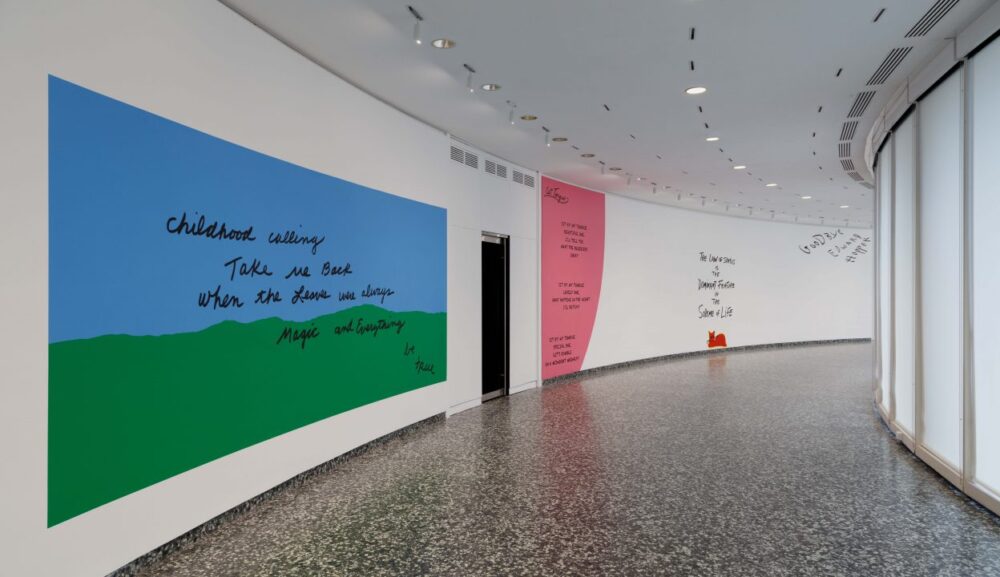Vibrant foliage and waterfront views dominate the landscape in Washington DC come fall time, but venture inside the U.S. capital’s museums at this time of year and you’ll also discover a city strutting its cultural feathers with a busy programme of exhibitions.

(Photo: Ralph Steadman, “Fear and Loathing inElko for Rolling Stone Magazine”1991, ink on paper Ralph Steadman, “In the Beginning from Animal Farm”1994, ink on paper)
Best known as the epicentre of America’s political establishment thanks to the presence of the federal government’s three branches – the Capitol, White House and Supreme Court – Washington DC also boasts a lesser known but nonetheless thriving cultural scene. If you’d like to dip into it yourself this fall, check out our selection below of the best exhibitions taking place across the city over the coming months.
Ralph Steadman: And Another Thing
This new exhibition presents 149 artworks and memorabilia pieces that showcase the prolific career of Ralph Steadman, one of the most influential illustrators and comic artists of recent decades. The retrospective invites visitors to explore Steadman’s role in the emergence of Gonzo journalism that places reporters at the centre of the story. Sketchbooks, children’s books, magazines, photographs and handwritten notes tell a further story of how the art was born – from sketches Steadman created as a student and his creative “Paranoids” caricatures made from reworking Polaroid photographs to a recent collaborative book trilogy about extinct and endangered animals.
Katzen Arts Center, American University Museum / 7 September – 8 December 2024
In the Library: Life in the Impressionists’ Paris

C. L. C., Pont Alexandre III, Paris, 19th century, colorized collotype postcard (Photo: National Gallery of Art Library)
Late 19th-century Paris saw major social, cultural, and physical change across the city. Political and military clashes led to widespread destruction, while at the same time industrialisation and new technologies were altering Parisians’ experience of urban space. In short, the city where members of the impressionist art movement lived and worked was in flux. Artists reacted to this epoch in several ways: some sought refuge in tradition, while others embraced the rapid onset of change. This selection of approximately 40 photographs and prints shines a light on the cultural milieu of Paris during this period, providing glimpses of a city and an art market on the cusp of modernity.
National Gallery of Art / 4 September 2024 – 17 January 2025
Sublime Light: Tapestry Art of DY Begay

DY Begay (Diné, b. 1953), Intended Vermillion, 2015. Wool with plant, insect, and synthetic dyes, 49 x 37 ½ in. Commissioned and funded by Kent and Elaine Olson for the Denver Art Museum, 2015.266. (Photo: Denver Art Museum)
Acclaimed fibre artist DY Begay is at once fundamentally modern and deeply entwined in the traditions of ‘Diné’ (the largest Indigenous nation in North America). The first retrospective of Begay’s career, this exhibition explores the artist’s passion for experiencing and interpreting her world, centred around Tsélaní, her birthplace and homeland on the Navajo Nation reservation. Each of the 48 unique tapestries on show bridge her traditional Diné upbringing and experimental fibre art practice. Through her embrace of colour, passion for design, and innovative handling of her material, she creates art that expresses a non-Western way of being to a contemporary audience.
National Museum of the American Indian / 20 September 2024 – 13 July 2025
Voting by Mail: Civil War to Covid-19
In 2020, millions more voters in the U.S. became familiar with voting by mail due to restrictions on movement imposed during the COVID pandemic. Through an assortment of artefacts including mail-in ballot envelopes, election mailers and photographs, this exhibition serves as a reminder that previous generations of voters used the postal service to cast absentee ballots decades earlier. Highlights include a mailed tally sheet from 1864 recording the votes of soldiers from Highland County, Ohio; an absentee ballot request postcard for an Alabama soldier during World War II; and a 5-cent postage stamp reminding citizens to register and vote. It also highlights how the pandemic and the move to postal voting brought attention to concerns over election integrity that have existed since the beginning of voting at polling places and by mail.
National Postal Museum / Through 23 February 2025
Jessica Diamond. Wheel Of Life

(Photo: Hirshhorn Museum and Sculpture Garden)
American Conceptual artist Jessica Diamond emerged in New York’s downtown art scene in the 1980s, adopting language as her primary medium to critique contemporary American life – particularly commercialism, corporate culture, and media. She also became noted for her nods to classic literature, with references across her work to renowned novels such as Henry David Thoreau’s Life in the Woods (1854), Lewis Carroll’s Alice in Wonderland (1865), and James Joyce’s Ulysses (1922). This exhibition comprises 15 text-and-image-based artworks that highlight the inventive nature of Diamond and her distinctive artistic practice spanning more than 40 years.
Hirshhorn Museum and Sculpture Garden / Through 5 January 2025
Road Warriors
In 2005, a self-driving blue Volkswagen Touareg known as ‘Stanley’ became the winner of a historic robotic vehicle race – the Pentagon’s Defense Advanced Research Projects Agency (DARPA) Grand Challenge. Created by a Stanford University team of faculty and students in collaboration with Volkswagen and a number of corporate sponsors, and at a time when the U.S. was increasingly looking to military-sponsored innovation to reduce casualties and broaden the role of robots during combat missions, the vehicle helped revolutionize driverless car technology. Through winter 2026, Stanley is available to view as the landmark object in a special exhibition at the National Museum of American History, where it connects the museum’s military and political history exhibitions.
National Museum of American History / Through Winter 2026
Tuan Andrew Nguyen: The Island

Tuan Andrew Nguyen, The Island, 2017, single-channel video, color, 5.1 surround sound; 42:00 minutes (Photo: Smithsonian American Art Museum)
Vietnamese-American artist Tuan Andrew Nguyen produces eye-catching multimedia installations that merge fact, memory, myth, and mysticism and use lush imagery to draw out these entanglements. By delving deep into archives and collaborating with communities, his projects weave together multiple voices to reveal other truths about — and strategies of repair from — colonial violence. In this exhibition, his video work The Island (2017) is shown for the first time with Bidong Spirit I, a sculpted headdress Nguyen created for the film. The titles of both artworks refer to the tiny Malaysian island of Pulau Bidong, a primary destination for Vietnamese escaping by boat after the collapse of South Vietnam in 1975.
Smithsonian American Art Museum / Through 4 May 2025